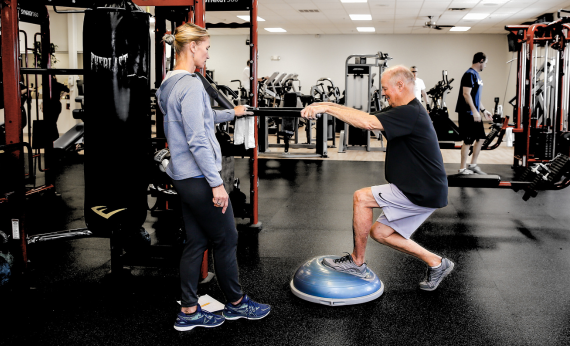The key to YOUth™ begins with YOU!
As we age, maintaining a youthful appearance becomes a common concern. While skincare and cosmetic procedures often dominate discussions around aesthetics, the role of neck strength and posture in preserving youthfulness is frequently overlooked. Programs like CerviFit, which focus on neck strengthening, can significantly contribute to a more youthful appearance by enhancing skin elasticity, reducing sagging, and improving posture.

The Aging Neck and Its Effects
The neck is one of the first areas to show signs of aging. Factors such as decreased collagen production, loss of muscle tone, and gravity can lead to sagging skin, prominent wrinkles, and an overall aged appearance. According to a study by Kahn et al. (2018), the neck's skin can lose elasticity over time, leading to the formation of "neck bands" and sagging, which can significantly impact one’s overall appearance.
CerviFit: A Focused Approach
CerviFit offers a structured program designed to strengthen the neck and upper body. By targeting key muscle groups, this program can enhance muscle tone and posture, both of which are essential for a youthful appearance. Here are several ways CerviFit contributes to maintaining a youthful look:
Improved Muscle Tone
CerviFit exercises focus on strengthening the neck muscles, which can lead to better definition and a more toned appearance. As the neck muscles become stronger, they provide better support for the skin, potentially minimizing sagging (Kahn et al., 2018).
Enhanced Posture
Good posture is essential for a youthful appearance. Poor posture can lead to a drooping neck and chin, contributing to an aged look. CerviFit emphasizes alignment and stability, which can help individuals maintain an upright posture and avoid the "tech neck" syndrome, often seen in those who frequently use digital devices (Yamamoto et al., 2021).
Increased Blood Flow
Engaging in neck strengthening exercises can improve circulation in the area. Better blood flow promotes skin health by delivering essential nutrients and oxygen, which can enhance the skin's overall appearance (Daly et al., 2020).
Reduction of Neck Pain
Chronic neck pain can lead to tension and stress, which may affect facial expressions and contribute to an older appearance. Strengthening the neck can alleviate discomfort, allowing for more relaxed and youthful facial expressions (Mikhael et al., 2021).
Preventing Age-Related Changes
Regular neck strengthening can help prevent age-related changes in the neck area. A study by Pahlavan et al. (2020) suggests that maintaining muscle strength in the neck can counteract the effects of aging and keep the skin looking firmer and more youthful.

Conclusion
Incorporating neck strengthening exercises through programs like CerviFit is essential for those seeking to maintain a youthful appearance. By enhancing muscle tone, improving posture, and increasing blood flow, individuals can significantly impact how they age visually. While skincare and cosmetics are important, the strength and condition of the neck should not be overlooked in the quest for a youthful appearance. Prioritizing neck health by using the CerviFit, can lead to lasting benefits, helping individuals feel more confident and vibrant as they age.

References
1. Daly, M., et al. (2020). "The Impact of Neck Strength on Skin Elasticity: Implications for Aesthetic Practices." *Aesthetic Surgery Journal*, 40(5), 586-592.
2. Kahn, S. J., et al. (2018). "Aging and the Neck: Assessment and Management." *Journal of Plastic, Reconstructive & Aesthetic Surgery*, 71(7), 1054-1060.
3. Mikhael, E., et al. (2021). "Neck Pain and Its Impact on Facial Expressions." *International Journal of Aesthetic and Cosmetic Surgery*, 2(2), 78-85.
4. Pahlavan, P., et al. (2020). "Preventive Measures Against Age-Related Neck Changes: A Review." *Journal of Geriatric Physical Therapy*, 43(3), 141-147.
5. Yamamoto, M., et al. (2021). "Postural Awareness and Its Relationship to Aesthetic Perceptions." *Journal of Health and Fitness*, 8(1), 15-23.

